- News
- Reviews
- Bikes
- Components
- Bar tape & grips
- Bottom brackets
- Brake & gear cables
- Brake & STI levers
- Brake pads & spares
- Brakes
- Cassettes & freewheels
- Chains
- Chainsets & chainrings
- Derailleurs - front
- Derailleurs - rear
- Forks
- Gear levers & shifters
- Groupsets
- Handlebars & extensions
- Headsets
- Hubs
- Inner tubes
- Pedals
- Quick releases & skewers
- Saddles
- Seatposts
- Stems
- Wheels
- Tyres
- Tubeless valves
- Accessories
- Accessories - misc
- Computer mounts
- Bags
- Bar ends
- Bike bags & cases
- Bottle cages
- Bottles
- Cameras
- Car racks
- Child seats
- Computers
- Glasses
- GPS units
- Helmets
- Lights - front
- Lights - rear
- Lights - sets
- Locks
- Mirrors
- Mudguards
- Racks
- Pumps & CO2 inflators
- Puncture kits
- Reflectives
- Smart watches
- Stands and racks
- Trailers
- Clothing
- Health, fitness and nutrition
- Tools and workshop
- Miscellaneous
- Buyers Guides
- Features
- Forum
- Recommends
- Podcast
TECH NEWS
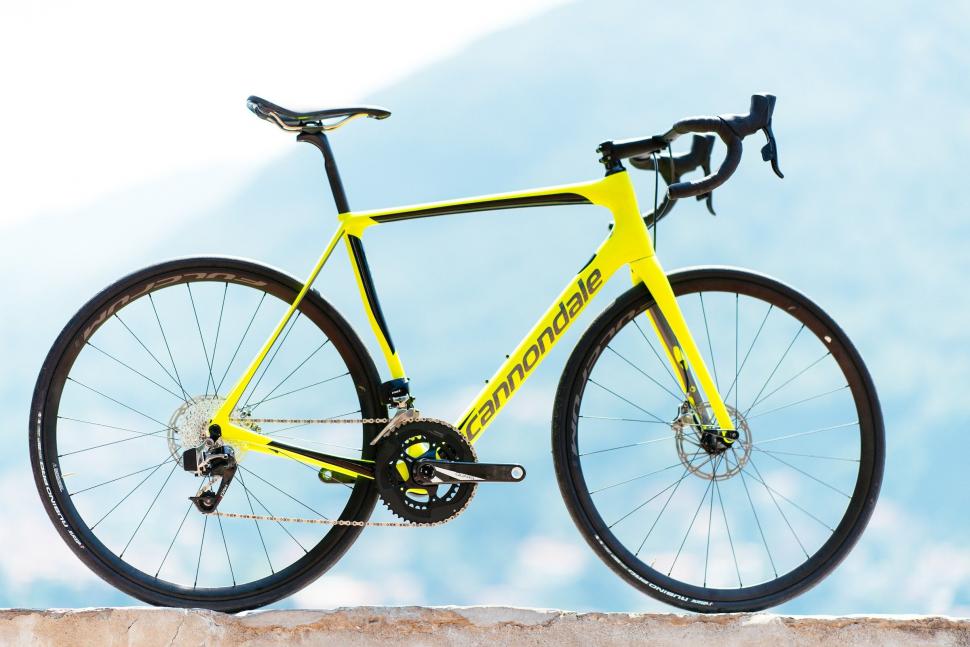 cannondale synapse 20185.jpg
cannondale synapse 20185.jpgThe making of the new Cannondale Synapse - Interview with David Devine and Ian Surra
You’ve hopefully read our first look article on Cannondale’s brand new Synapse, completely overhauled for 2018 with a lighter and stiffer frame, wider tyres, disc brakes and mudguard mounts. And now you can read about the design process and development of the new bike.
road.cc had the opportunity to sit down with Cannondale’s David Devine and Ian Surra, road product manager and industrial designer respectively at the US firm, and talk at some length about what went into the new Synapse. Topics we covered included the evolution of endurance bikes, the growing appetite for wider tyres, aerodynamic influences, the design benefit of disc brakes and much more besides.
road.cc: It’s been four years since the launch of the previous Synapse in Tuscany, what’s been the biggest aim with the new bike?
David Devine: I think one of the big things was being able to have a focused approach on this one. One of the advantages of having that bike four years ago in Tuscany and then also introducing disc brakes in the same year was that we have an entire generation of bikes developed with disc brakes going into making this bike. And we have four years of feedback, so we can be decisive on what we want to develop around, so in picking the disc brake bike it really opened up the doors for what we could do in industrial design and engineering and a large part of just picking disc brake only development is why the bike ends up with these asymmetric shapes which I think is one of the big advances of the bike.
The other thing, from a performance side, we saw a gap between some of our elite race bikes and our endurance bikes in terms of stiffness, responsiveness and weight, so we wanted to close down that gap and match our elite level race bikes stiffness and drop the weight. So we have a bike that feels lively and responsive like an Evo and dropped about 330g out of the frame and fork together from the bike we introduced in 2014.
What has been the biggest benefit of going completely to disc brakes in terms of frame design?
We don’t have to have a symmetric design right down the centre of the frame, so one of the things actually Ian working on the fork was not having to mount a rim brake caliper to the crown of the fork. We take a step back, we think about what a fork does, it works together as a system, the two legs are kind of doing different roles.
Ian Surra: Tyre clearance is also a huge thing, you free up those areas of the bike where normally tyre clearance gets restricted, and we could also make the SAVE system perform better bu not worrying about any of those rim brake compatibilities.
So rim brakes are restrictive when it comes to frame design then?
David: Asymmetric frame design for sure. There are certain things like your axle to crown, normally you have to have a certain crown height so that the rim brake can be mounted and still reach the rim, on the disc brake bike the fork is 1cm longer and the head tube is 1cm shorter, so things match up. So it is a bit more free flow, it does free up the design. We’ve gone without a seatstay bridge, and things like that from a design perspective, really cleaned things up.
The previous Synapse was developed for racing and Peter Sagan was used during its development and won a few classic races on it. Has there been the same race focused development with the new Synapse?
David: From a development and testing side, we had the guys on the bike super early, they were able to provide feedback. We had some of them coming back asking if it’s the new version of the Evo. We had the same thing on the first Synapse. I think in particular they were interested in the design of the bike, when they found out it was the Synapse there were definite comparisons in stiffness in what they had with Evo. So, we were in that back and forth transition period and for pro racing sometimes rim brakes definitely play a role and until these things shake their way out, we had riders testing on the new bike at Paris-Roubaix, but for the large part they were primarily on the rim brake Synapse that we introduced four years ago.
So we’ve had a little army of bikes for them to test for about 8 months or so now, but their real focus was on having the rim brake bike there and then just being able to give us feedback on the disc brake bikes. I mean, ideally, in my perspective, I don’t see this as being a bike you show up on and race for two weeks then put away in the service course when you’re done with it. I think ultimately at some point as this stuff is integrated into the field some riders will choose to ride disc brakes and some will choose to ride an Evo.
Endurance bikes, in the UK at least, are really popular with cyclists that don’t race, or might have raced but now want more comfort. The requirements of someone who doesn’t race are very different to a pro racer, does developing for a pro skew the design direction of the bike?
Ian: We identified a pretty broad user for this category of endurance rider, it is a broader appeal category than our super focused elite race bikes, so that gave us many challenges of designing the next Synapse, to make it faster, racier and stiffer and move it towards the Evo in some ways. But also on the other side of that, you see people with larger tyres on and lowering the gear. So designing for that spectrum, delivering for all those types of people was maybe the primary challenge.
That’s a bigger challenge with the Synapse I would guess? The Evo has a very pure focus?
David: I think the thing that connects the two is that everybody likes to go fast. The balance for us including all the performance, like responsiveness, agility, weight and all that stuff in this category, but the fixed points are that it’s a capable bike, it takes a pretty big tyre, whatever that is at the time, in this case it’s 32mm, and then make sure the position is neutral, if you’re looking for a high handlebar position you can get there, if you’re looking for something more aggressive you can get there too, and that people feel at home and comfortable on the bike, and the position can be adapted.
You’ve mentioned that the gap between the Synapse and Evo has narrowed with the new model?
Ian: Certainly in ride feel, that was a goal in the development of the bike, bring the head tube stiffness up, really dial in the handling, tricks we’re doing with the fork offset, to close the gap between the performance feel of the bike and Evo.
And do you see it narrowing more in the future? You’ve got three lines of road bikes now (Evo, Synapse and Slate).
David: Our focus right now is on maintaining that elite race level category where we need to have some bikes that are focused and pointed at people that are super interesting in racing, and of course support the professional side as well. Then on the endurance side, I think Ian is spot on saying that you identify a pretty broad spectrum of riders, and it’s kind of like gloves of for us on developing a bike that us just for bike riders.
What can we expect from the future, the next Evo?
David: We always have to work on stuff.
With the Synapse moving closer to the Evo in terms of performance, does that mean you have to move the Evo on another level or take it in another direction?
David: I don’t know what you do think?
I don’t know I’m asking you.
David: I don’t know, I think it will change a little bit. I’d like to see a bit more of division between the silos. We have some designs that are quite refined and we’ve pushed weighs pretty far, and we’ve pushed stiffness quite far, so we have to really look around to see what those performance improvements are. It’s going to take some time.
Back to the Synapse and endurance category, comfort is a big buzzword at the moment and certain brands have gone down interesting routes in terms of adding suspension, what’s your view on some of those approaches?
David: I think we see a pretty clear dividing line, we have bikes with active suspension with Slate, we fully believe in active suspension with an air spring with a damper and a lockout, so that the rider is in control of things like rebound, spring rate, all of that stuff. I think that’s where the real benefit of an active system is, it’s tuneable, controllable and from a development side we’re able to control the riding experience. And that comes with a bit of weight penalty, so we put it in places where riders can really get the benefit of the added confidence and traction.
And then we also believe in active deflection. I think one of the more atypical places we really started to focus on that is when we brought SAVE over into Evo in 2011. Active deflection can be a really lightweight way to make bikes handle better, to add more traction, and we think that comes out in the ride experience of the bike.
That leads us onto the new SystemBar. What was the genesis of the idea?
David: I think I was asking the design team for an integrated stem, something that was going to look nice and complete the look of the bike.
So you came at it from an aesthetic stance?
Ian: There were two things. There was expanding the SAVE system into the cockpit, that was a goal project, we were looking at the previous bike and those areas where we could improve, and we identified the handlebar and stem as an area we could do something to make the comfort even better in the front. And along with that was the ask for a…
David: Integrated stem! I think these guys over delivered. They were like, oh here’s an entirely SAVE integrated cockpit and I’m like “Oh shit!” I don’t think we had that foresight when we putting together the rider needs, they were really coming to us with we think this is a place where we have a huge benefit for delivering a better ride experience and improve ergonomics.
Ian: And some of it came directly from research and testing user feedback, the decision to go with the system that has pitch adjust, and we dialled in exactly what the range of that pitch adjust was with a bunch of ergonomic testing with prototypes and stuff, and then it became obvious it was super important for fitters and ergonomics to have a separate stem and bar that are interchangeable. Everybody doesn’t fit the same, if you have a one-piece bar and stem it’s got a fixed position, it might be like six combinations of length and width, that’s just too restrictive for a bike fit. Especially for people who are going to be riding long distances, long days, it needs to be comfortable. So that’s why we made our bar.
Tyres have gotten wider over the last few years, do you see tyres continuing to get wider in this category over the next few years, or have we reached a limit of tyre width?
David: I think we are at an efficient point right now, especially for this category of bike with 28mm tyres, soon as we starting to get bigger than that for standard road riding we’re going to need to start looking at things like casing support, in order to make it so you’re not having to run higher pressures. We believe in big tyres. We have bikes with really big tyres, for this category of bike this sweet spot between 28 and 32mm is well suited.
Some of the bigger stuff, especially on the Slate, we’re switching to a knobbly tyre with a stiffer casing, which is going to allow the rider to use a lower pressure and get a bit more bite out of the tyre, without having the casing collapse. So it’s a balance. You can make a stiffer casing and you get a heavier tyre, or you can keep the tyres within a certain window of size, and having something that’s still lightweight.
Have you done your own tyre testing of different width tyres to find the sweet spot in terms of rolling resistance, weight, aerodynamics and performance?
David: Part of why we went to Vittoria tyres, super low rolling resistance and maybe a big part of why on most of the bikes we didn’t go with an even bigger tyre is that there’s a blend of aerodynamics and rolling resistance. I think we all have quite a lot of experience on 28mm Vittoria tyres, I’m riding them normally at 65psi, something like that, and this is a really good experience, especially for this category. There are some sweet spots and balances between enough volume so that the bike rides smoothly and comfortably, you can run low enough pressures that you have good rolling resistance, but then also aerodynamic as well.
Touching on aerodynamics there, the new Synapse has a slightly aero shaped downtube, and the Systembar is clearly aero shaped. Have you stuck the new bike in a wind tunnel to test its aero performance?
David: We have tested it, yeah, it does quite well out of all our bikes. It’s a little bit of a subtlety of our design, kind of similar to Evo, we do it wherever we can do it for free. We have priorities that are higher, we want to make the bike smooth and comfortable, make sure it’s lightweight for that category, we had some aggressive goals, and if it comes in counter to those goals, then those other goals trump, places like the downtube and handlebar are kind of like win-win.
You’ve not released any aero data or claims?
David: We’ve not really seen it necessarily as a big priority within this specific category, but in our testing, the previous Synapse was actually probably one of the faster bikes we have in our line, so it does quite well, and the shapes between the bar and downtube on this one only help.
Is aero a category you’ve looked at?
David: It’s a category we look at, we for sure have hired against it, the challenge for us is in being able to maintain everything people love about our bikes, whether it’s ride quality or weight, and deliver something that’s fast and efficient, so it’s something we look at, it’s something we’re researching against, not quite sure what the final product is, but that might be the next evolution of our race bikes.
Was retaining a similar aesthetic to the previous Synapse key in the development of the new bike?
Ian: So elements of the previous model are very successful and well loved, those organic forms, so that was a goal of the design, to maintain a similarity and make it an evolution and extreme refinement of the same aesthetic. But also at the same time make it a higher performance frame, lighter, more efficient, more comfortable, so we had to balance all of the elements.
David: We showed you bikes back to 2006, and I think if they’re all next to each other you can see the lineage. There’s a clear evolution. I think the dream for any designer is you have longevity in a product for 20 years and you can see it’s evolution.
So to sum up, why should somebody buy a Synapse over any other bike?
David: I think one of the goals for us is to make a bike that easily answers the question if you’re walking into a bike shop and ask “I just want to ride road bikes.” We’ve made things pretty complicated over the last couple of years with lots of segmentation, I think this endurance category is an easy answer for that question.
The research we’ve put in on this bike, and the interaction we’ve had with people that are shopping in this area, we check off a lot of their requirements and desires, and maybe offer some things they weren’t specifically asking for that are going to make their riding experience better. So I think there’s a level where people are asking for lightweight bikes that handle like race bikes, we offer them a more neutral, comfortable position and give them room to put in bigger tyres if that’s what they’re into, and then just some functional things like fenders, thru-axles, stuff that just makes the bike better to live with.
Thanks to David and Ian for the taking the time to answer our questions. An interesting discussion on the design of the new Synapse and the ethos behind the bike, and the sound reasoning behind many of the new features.
You can read an in-depth first look at the new Cannondale Synapse here.
David worked on the road.cc tech team from 2012-2020. Previously he was editor of Bikemagic.com and before that staff writer at RCUK. He's a seasoned cyclist of all disciplines, from road to mountain biking, touring to cyclo-cross, he only wishes he had time to ride them all. He's mildly competitive, though he'll never admit it, and is a frequent road racer but is too lazy to do really well. He currently resides in the Cotswolds, and you can now find him over on his own YouTube channel David Arthur - Just Ride Bikes.
Latest Comments
- Pub bike 1 hour 5 min ago
On the website one of the bikes on which they show the device fitted is a mid-motor e-bike. This seems like an unusual application but then maybe...
- stonojnr 3 hours 5 min ago
the police barely do anything with close pass data, like just analyse the clear geographic hot spots and setup camera vehicles themselves....
- Jogle 3 hours 42 min ago
I bet those ambulances have never paid tax in their lives! They should get out of the way of hard working, tax paying, otherwise law abiding cars
- mark1a 4 hours 17 min ago
Have a like for using the word "profligate" 👍😁.
- Capt Sisko 5 hours 59 min ago
Just like folding helmets. Every couple of years someone thinks, that's a brilliant idea, I'll sell millions, I'll make a fortune. Erm, no.
- eburtthebike 7 hours 17 min ago
He understands it: his social media site is called Truth Social or somesuch.
- chrisonabike 8 hours 40 min ago
Because they can....
- Secret_squirrel 8 hours 45 min ago
If the employee's of Komoot are mostly German employees on standard German contracts the new Italian owners are in for a bit of a shock....
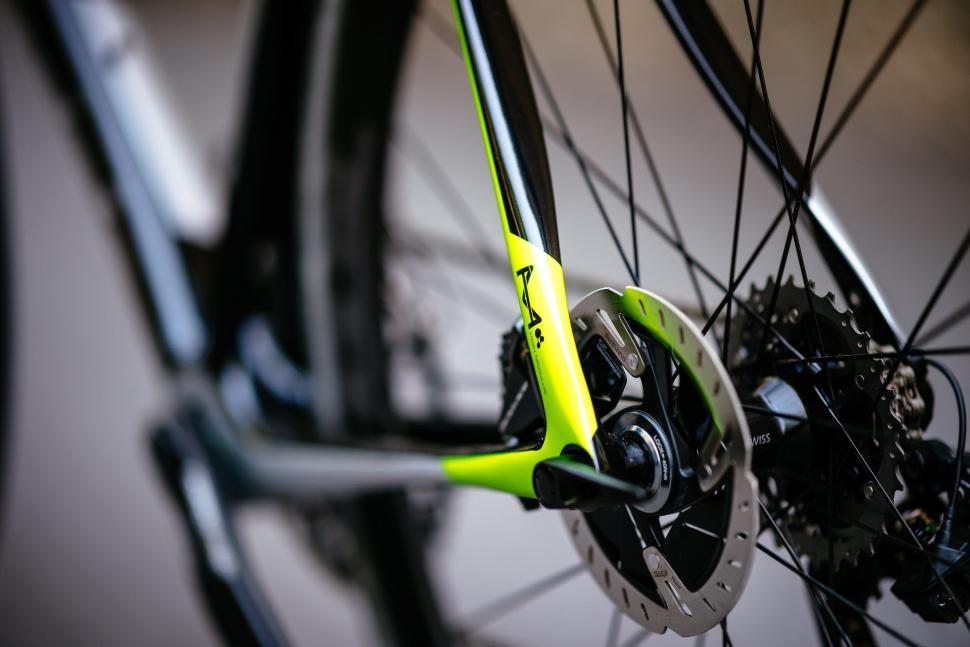
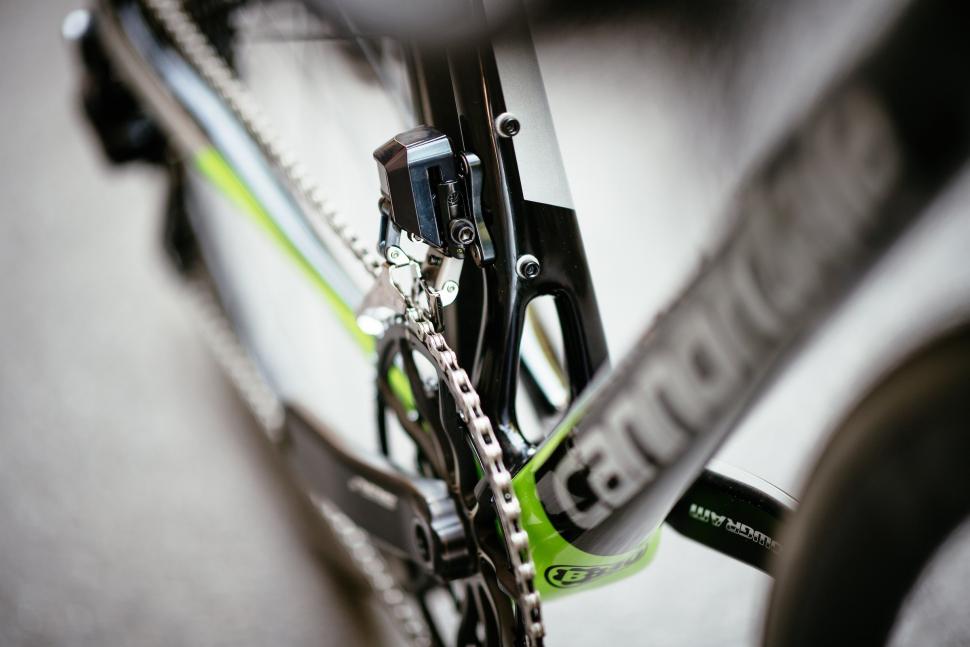
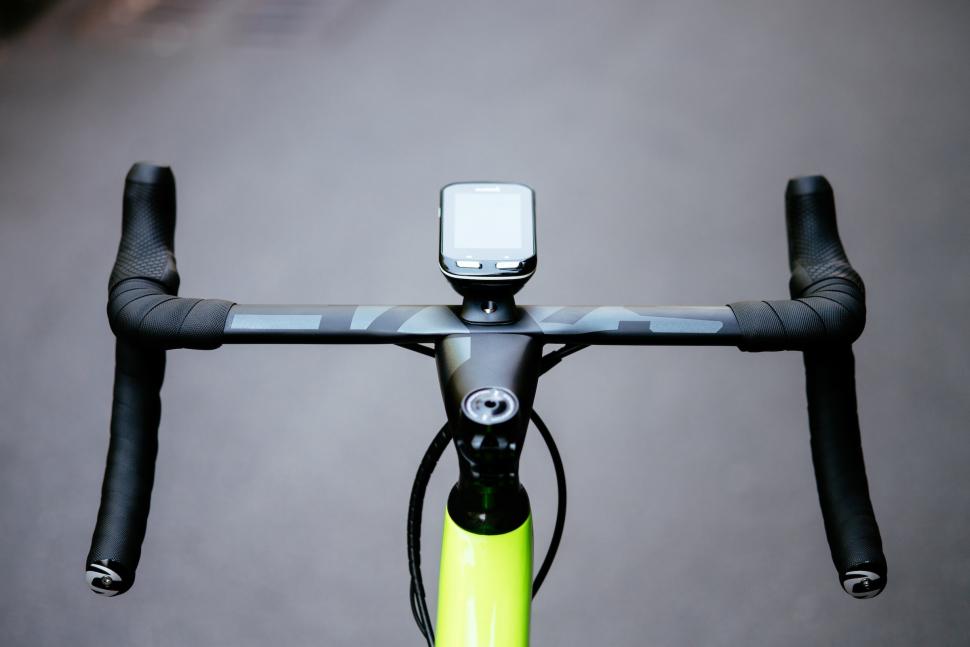
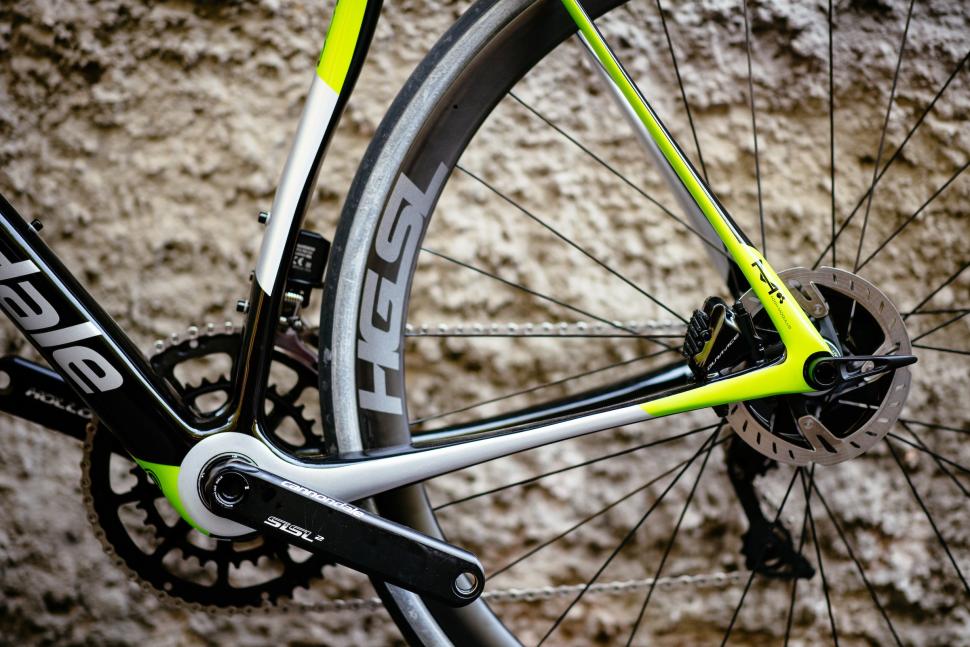
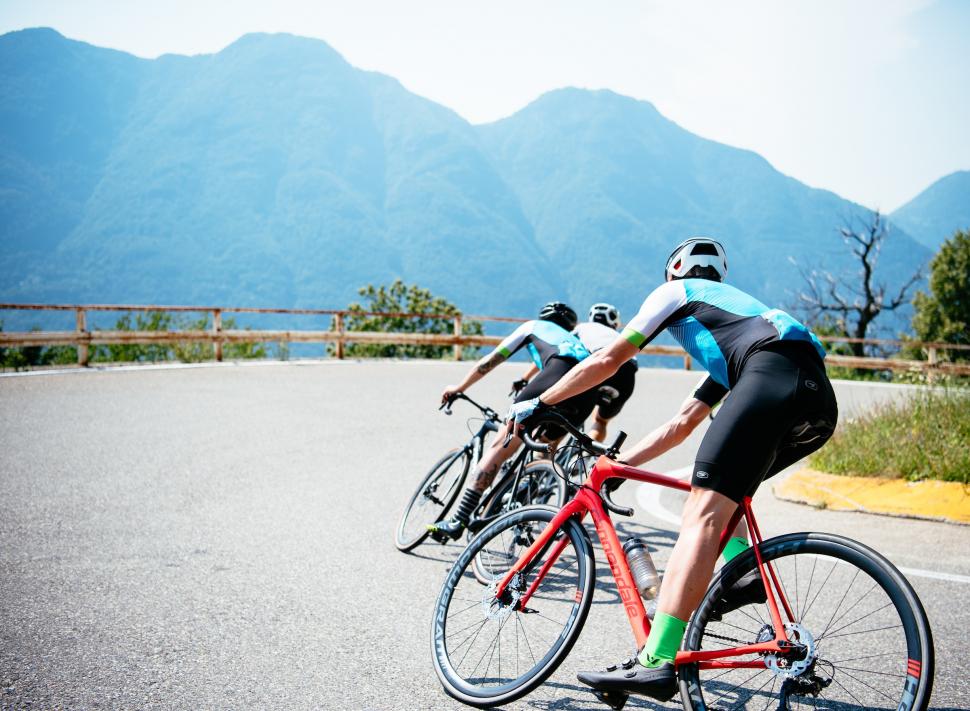
Add new comment
5 comments
I have a Hi-mod Synapse from 2 years ago and I love how smooth it is. Worried the '18 model will lose some of this by raising the seat post junction so you have less post sticking out (which is one of the key items that makes the current ride so compliant). Very suspicous the "running 28mm tyres at 65psi" is just to offset the loss of post movement (I run mine today on 25mm 80PSI and can get away with an unpadded seat it is that comfortable)
Also very concerned the Reach has been changed - this bike fitted me perfectly before with a 100mm stem and just 10mm between stem and headset (on a 51 frame). A longer reach will mean me moving to 80mm stem and means there are a lot more frames that are suddenly competition for this (all having the same partially compromised reach for me)
The best safety and comfort innovation is fitting that steerer cap spike to rip your nut bag clean off at the stump if you crash.
So end of the road for rim brakes; about time.
Is it wrong to find that picture of the off side rear dropout slightly erotic?
Interesting that there's no mention of the CAAD12 in all this.